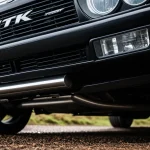Strategies for Maximizing Airbag Performance in Minivans
Ensuring airbag efficiency in a minivan requires a proactive approach focusing on regular assessment and optimization. The first essential step is to routinely check the airbag system’s readiness. This involves monitoring the vehicle’s airbag indicator lights and addressing any warnings immediately, as these can signal malfunction risks that compromise crash protection. Neglecting these alerts can reduce the effectiveness of airbags during an accident.
Upgrading older airbag systems is another vital strategy. Many minivans come equipped with airbags designed years ago, which may lack the responsiveness of newer technologies. Installing updated modules featuring adaptive inflation can dramatically improve airbag performance by adjusting deployment speed and pressure based on the severity of impact and occupant position. This level of customization increases overall minivan safety significantly.
Also read : Essential Insights into Vehicle Lowering: Uncovering the Safety Risks You Need to Know
Additionally, integrating airbags with other safety features amplifies their protective effect. For example, pairing airbags with advanced seatbelt tensioners and collision sensors ensures coordinated activation during crashes. This synergy enhances optimizing airbags beyond their standalone capacity, providing comprehensive protection. Maintaining and optimizing these systems together is crucial for maximizing safety outcomes in diverse crash scenarios.
In summary, maintaining airbag efficiency involves timely inspections, embracing technology upgrades, and ensuring systems work cohesively within the minivan’s broader safety architecture. These strategies collectively ensure the best possible crash protection for passengers.
Also to read : Mastering Clutch Pedal Sensation: Your Comprehensive Step-by-Step Guide to Adjusting Free Play in Manual Vehicles
Latest Advances in Airbag Technology for Minivans
Minivan crash protection has evolved significantly with the introduction of advanced airbags that respond dynamically to different crash scenarios. Modern safety features now include smart sensors capable of detecting occupant size, position, and crash severity. These sensors enable adaptive inflation technologies, which finely tune airbag deployment speed and pressure to minimize injury risk while maximizing protection.
One pivotal advancement lies in the integration of wireless and automatic diagnostic updates. This technology constantly monitors airbag system status and alerts drivers proactively if anomalies or malfunctions arise. By enabling real-time diagnostics without manual input, these systems greatly enhance airbag efficiency and reduce delays in addressing potential issues.
Moreover, the deployment systems have become more precise, employing multi-stage inflators that adjust inflation based on impact data. These modern safety features not only improve occupant protection but also reduce risks of airbag-related injuries by customizing responses to specific crash types and occupant characteristics.
In summary, these cutting-edge innovations exemplify how continuous refinement of airbag technology plays a central role in advancing minivan crash protection and ensuring safer travel for all passengers.
Best Practices for Airbag Maintenance and Regular Safety Checks
Regular airbag inspection is crucial to sustaining effective crash protection and overall minivan safety. Scheduling routine maintenance checks ensures that any malfunction is detected early, preventing airbag failure during critical moments. Typically, manufacturers recommend inspections every 12 to 24 months or according to mileage thresholds, but consulting your vehicle’s manual will provide precise intervals suitable for your model.
Recognizing signs of airbag malfunction is key. Warning lights on the dashboard, unusual noises during startup, or system alerts indicate that the airbag system requires immediate attention. Ignoring these signals compromises airbag efficiency, reducing its ability to protect passengers effectively. A thorough visual check can also identify physical damage to sensors or connections, which can impair deployment.
Professional diagnostics employ advanced scanning tools to detect fault codes that are not visible through simple observation. These automotive diagnostic devices communicate with the vehicle’s onboard computer system, pinpointing specific issues such as sensor failures or inflator malfunctions. Timely repairs based on these insights maintain the integrity of optimizing airbags and ensure the system conforms to safety standards.
In summary, consistent airbag inspections, awareness of malfunction symptoms, and leveraging professional diagnostics form a comprehensive approach to minivan maintenance. These actions preserve high airbag efficiency and maximize crash protection for all occupants.
Real-World Outcomes: Case Studies on Improved Minivan Safety
Examining minivan crash tests reveals significant advancements in airbag performance results tied to upgraded systems. For instance, models equipped with newer, adaptive airbags consistently show reduced injury metrics compared to older designs. These safety case studies emphasize the value of deploying airbags that adjust inflation pressure according to crash severity and occupant position, thereby enhancing crash protection in diverse collision scenarios.
One notable case involves minivans retrofitted with multi-stage inflators and integrated sensor arrays. Post-upgrade tests recorded fewer instances of head and chest trauma among dummies, highlighting the critical role of optimizing airbags to respond dynamically rather than deploying at a fixed intensity. This adaptive response improves minivan safety by accommodating different crash types and passenger sizes.
Moreover, real-world accident analyses demonstrate that comprehensive airbag systems integrated with seatbelt pre-tensioners and side-impact protection deliver superior results. These safety case studies confirm that synergistic operation of multiple protective features makes a measurable difference in passenger outcomes. Collectively, the data underpin the importance of continued research and implementation of advanced airbag technologies to push the boundaries of crash protection in everyday driving conditions.
Meeting and Exceeding Airbag Safety Regulations in Minivans
Understanding airbag regulations is fundamental for ensuring that minivans deliver reliable crash protection. These regulations encompass federal and industry-mandated vehicle safety standards designed to guarantee minimum performance levels of airbag systems. For instance, the National Highway Traffic Safety Administration (NHTSA) requires that airbags deploy within strict timing and force parameters, providing effective occupant protection without causing unnecessary injury.
How can you verify that your minivan complies with these standards? Typically, compliance is demonstrated through rigorous crash testing and certification processes performed by manufacturers before vehicles reach consumers. Reviewing your vehicle’s documentation or consulting manufacturer disclosures can confirm adherence to current minivan compliance requirements.
Exceeding the minimum safety standards offers tangible benefits. Advanced airbags designed to operate beyond baseline regulations often feature adaptive inflation and multi-stage deployment, which tailor protection to the occupant’s size and injury risk profile. This enhances minivan safety by reducing the likelihood of airbag-related injuries while maintaining optimal airbag efficiency during collisions.
Automakers who proactively integrate these enhanced systems set a higher bar for vehicle protection. Consumers benefit from innovations that go beyond regulatory minimums, enjoying improved peace of mind and superior crash protection in their minivans. Staying informed about changes in airbag regulations and prioritizing vehicles that surpass these benchmarks is a crucial strategy for maximizing safety on the road.
Expert Recommendations for Consumers and Auto Professionals
Choosing a minivan with high airbag efficiency is a critical first step toward enhanced minivan safety. Experts advise consumers to prioritize vehicles that feature the latest advanced airbags and optimizing airbags, such as those equipped with adaptive inflation technologies and multi-stage deployment systems. These features have been proven through minivan crash tests to significantly improve crash protection by tailoring airbag response to crash severity and occupant characteristics.
When collaborating with certified technicians, it is important to engage professionals knowledgeable in the latest automotive best practices regarding airbag systems. Routine check-ups should include detailed diagnostics beyond standard inspections to identify subtle faults that could undermine airbag efficiency. Professionals often recommend upgrading older airbag modules to current-generation systems, which integrate better with other vehicle safety features, such as seatbelt pretensioners and collision sensors, maximizing overall minivan safety.
To stay informed about innovations in airbag safety, both consumers and professionals should consult trusted resources that detail ongoing developments in airbag performance results and regulatory changes. Awareness of evolving standards allows better decision-making when considering aftermarket upgrades or vehicle purchases. Adopting these expert-recommended strategies ensures superior crash protection and fosters confidence in the minivan’s safety capabilities.









